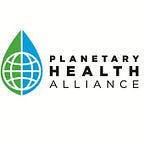Temperature Changes
Kari Calliste-Singletary RN
Before I was reassigned to the holding area, I never imagined it to be a point of such unraveling chaos that I experienced. Lab checks, medical optimization (medical clearance), medication administration, nursing assessment and the consideration of ASA I, ASA II or beyond. ASA III requires medical clearance, definitively. Where Peri -op ( department of surgery) is an unpredictable storm, at 5:30AM, OR holding is the rain cloud that garners a tumultuous wind and temperature changes with an emergent need for shelter. Three checks are certain, is the patient NPO since midnight, does the patient have loose teeth or removable dental work, is the patient currently on or has stopped anticoagulants. At the eye of the storm, the duality of surgery requires conclusively; an attending/resident of surgery, and an attending/resident of anesthesia. Where the MD is the weatherman, the nurse is the anchor person who investigates and informs. Temperature changes, (hypothermia) related to anesthesia occurs from a combination of anesthetic-induced impairment, thermoregulation, and from exposure to the cold environment. When I began my clinical experience in the PACU at Woodhull, I would always wear a fleece jacket, winter summer fall or spring. Even the patients coming into the PACU from being In the very cold operating room would remark on the coldness. To manage the coolness, an intervention was indicated. The nurses would initiate Bair Huggers on admission for thermoregulation and comfort care. Temperature assessment is a pertinent vital sign. Temperature changes can be red flag as to an emergent issue with a client. A couple weeks ago, a colleague was relaying to me information, an admit to the PACU. There was an admission to the Post Anesthesia Care Unit. The report from the anesthesia attending to the nurse was essentially; surgery was longer than planned and the patient did not receive adequate warming in the OR, thus the patient’s temperature when admitted to the PACU was consistently less than 96 degrees Fahrenheit, and dangerously even falling into the low 95’s. To manage this patient, an intervention was indicated, ventilation support was initiated as the body was consistently in a state of dormancy or metabolic rest. As HCP’s we know and understand the significance of normal body temperature at 98.6 F. A contrast to hypothermia is a complication of anesthesia termed malignant hyperthermia which can be triggered by anesthetics or genetics.
When we consider global temperature changes, climate change indicates that the Earth’s temperature has risen by .14 Fahrenheit per decade since 1880 and almost doubled since 1981. However, there is a larger part of society that is consistently ignoring the evidence of climate change. A couple weeks ago, New York experienced a heat wave that didn’t break for a few days. The community center for aging adults where I take part in clinical rotations offered the support of a cooling center service where people could come to literally chill out and cool down. That week I also received notifications from Con Edison, and from the building manager where I live about managing energy reserves to prevent power outages and maintain a comfortable and safe temperature while indoors. Climate change is partially caused by the human creation of gases that trap the Sun’s energy. These gases, which are essentially trapped on Earth, warm the atmosphere, melts glaciers and increase humidity as evidenced by the increase in extreme weather patterns, such as heat waves.
Every living thing thrives with a mechanism of homeostasis, from oceans to rain forests, to the maintenance of a human life. A temperature check is a vital sign and an indication of general health and well-being. What is climate change telling us about the client (Earth)? An intervention is indicated.
References
David S Beebe, M. D. (2022, July 13). Malignant hyperthermia in the operating room: Practice Essentials, problem, management. Malignant Hyperthermia in the Operating Room: Practice Essentials, Problem, Management. Retrieved July 31, 2022, from https://emedicine.medscape.com/article/2500077-overview
G;, B. B. B. A. R. (n.d.). Temperature Management under general anesthesia: Compulsion or option. Journal of anesthesiology, clinical pharmacology. Retrieved July 31, 2022, from https://pubmed.ncbi.nlm.nih.gov/29109627/
NASA. (2022, July 28). Climate change evidence: How do we know? NASA. Retrieved July 31, 2022, from https://climate.nasa.gov/evidence/
NPR. (n.d.). 🔊 listen now: How big oil misled the public into believing plastic would be recycled. NPR. Retrieved July 31, 2022, from https://one.npr.org/?sharedMediaId=897692090%3A916807342
Person, & Valle, S. (2022, July 30). Exxon, Chevron Post blowout earnings, oil majors bet on buybacks. Reuters. Retrieved July 31, 2022, from https://www.reuters.com/business/energy/us-oil-giants-exxon-chevron-post-blowout-earnings-ramp-up-buybacks-2022-07-29/
